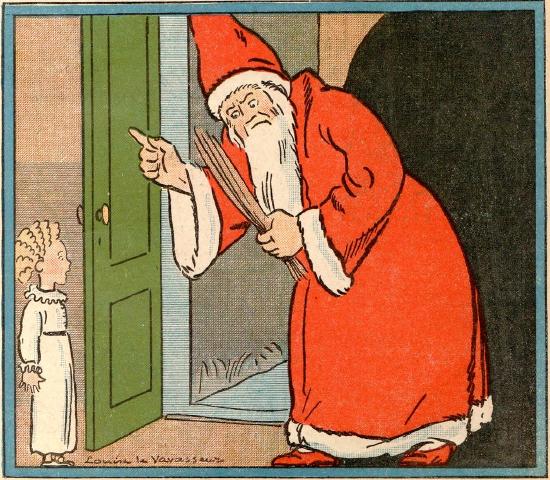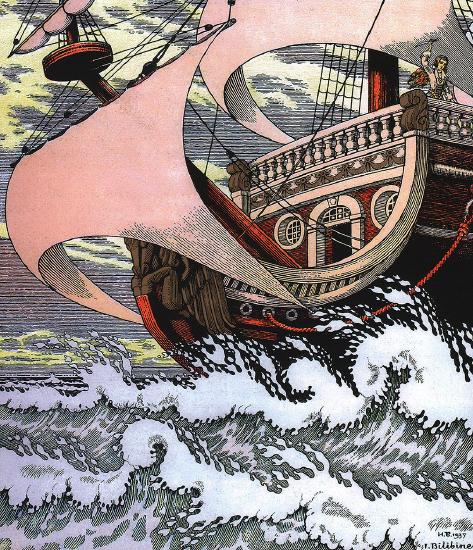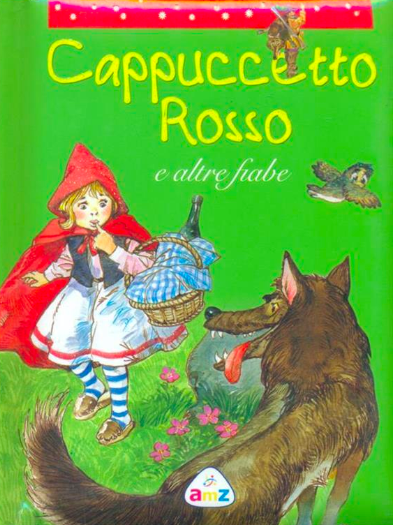51 RACCONTARE LE STORIE IMPERFETTO E PASSATO PROSSIMO
Rossella Pescatori; Caterina Peri; Shahzad Zahedi; Caren Bernezet Parrish; and William, J. Carrasco
Learning Objectives
- In this section, you will learn how to use l’imperfetto to describe past states, settings and background actions.
- Contrast passato prossimo vs imperfetto
Studiamo !
 “Pere Noel” by pilllpat (agence eureka) is marked with CC PDM 1.0
“Pere Noel” by pilllpat (agence eureka) is marked with CC PDM 1.0 Ship at Sea 1937.” by Halloween HJB is marked with CC0 1.0
Ship at Sea 1937.” by Halloween HJB is marked with CC0 1.0
L’imperfetto is used to describe situations, states, and conditions that were ongoing in the past, with no definite beginning or end, like actions that are part of a setting or background.
The imperfect is used to describe actions that were in progress at some time in the past. It can thus be used to describe the setting or background actions occurring while other specific and isolated actions (expressed with the passato prossimo) occur.
In English, the use of the imperfect is often expressed with: “was, were” + doing something. For example, “They were eating when….”
PASSATO PROSSIMO AND IMPERFETTO
It is time to practice combining the passato prossimo with the imperfetto. This will allow us to tell stories that take place in the past.
(a) On the one hand, the imperfetto will helps us describe:
(i) actions we used to do or did regularly:
Ogni anno, andavamo dai miei nonni a Venezia. (Every year, we used to go to my granfather’s house in Venice.)
(ii) states of being and feelings from the past (which are usually ongoing; not one-time events):
Quando avevo 14, mi piaceva fare break-dancing. (When I was 14, I really loved break-dancing.)
(iii) actions that set the scene or are in the background. We usually describe when and where things happened with the imperfect.
Erano le 10 di sera e faceva freddo… (It was 10 at night and it was cold…)
(b) On the other hand, the passato prossimo will allow us to present actions that occurred as single events that were completed at a certain time in the past.
Il weekend scorso, sono andata a Los Angeles. Ho incontrato il mio amico Pat e gli ho parlato . (Last weekend I went to Los Angeles. I met up with my friend Pat and I talked to him.)
In other words, the imperfect tells us what used to happen and how things were in general. The passato prossimo tells us what happened. The combination of these two past tenses gives us the ability to tells stories about the past – whether it’s last weekend or 10 years ago.
(c) Contextual clues will help you decide whether or not the imperfetto or the passato prossimo are required when talking about the past. Here are some examples:
| Imperfetto | Passato Prossimo |
|---|---|
| sempre, spesso, a volte, di volta in volta, raramente, mai | una volta |
| d’abitudine, normalmente | poi, ancora, dopo |
| tutti i giorni, tutte le settimane, tutti i mesi, tutti gli anni | improvvisamenre |
| qualche giorno, qualche settimana, mese, anno | in un attimo |
Mentre is used for activities that were happening simultaneously:
Mentre studiavamo in camera, i nostri genitori parlavano in sala.
(d) Here’s a summary of the differences between the imperfetto and the passato prossimo:
| Uso dell’imperfetto | Esempio | Uso del passato prossimo | Esempio |
|---|---|---|---|
| Habitual past actions | Facevo surf tutti i giorno | Single past actions | Ha mangiato con Carolina ieri. |
| Description of past state | C’erano molti studenti nella mia scuola | Consecutive actions (in a series) | Ieri sono andato in biblioteca, poi ho mangiato un panino in mensa. |
| Past action in progress | In quel periodo studiavo informatica. | — | — |
| Ongoing action (that form a background for an interrupting action) | Dormivo quando… | Interrupting action | …all’impovviso è caduto per terra. |
| Inizio | Mezzo | Fine |
|---|---|---|
| all’inizio | poi | alla fine |
| prima | poi | finalmente |
| dapprima | dopo | infine |
Per sapere di più.
| Italiano | Inglese |
|---|---|
| quando | when |
| in quel momento | when |
| al momento che | the moment when |
| quando improvvisamente | when suddenly |
| improvvisamente | when all of the sudden |
Guardate questo video : Imperfetto o passato prossimo ?
